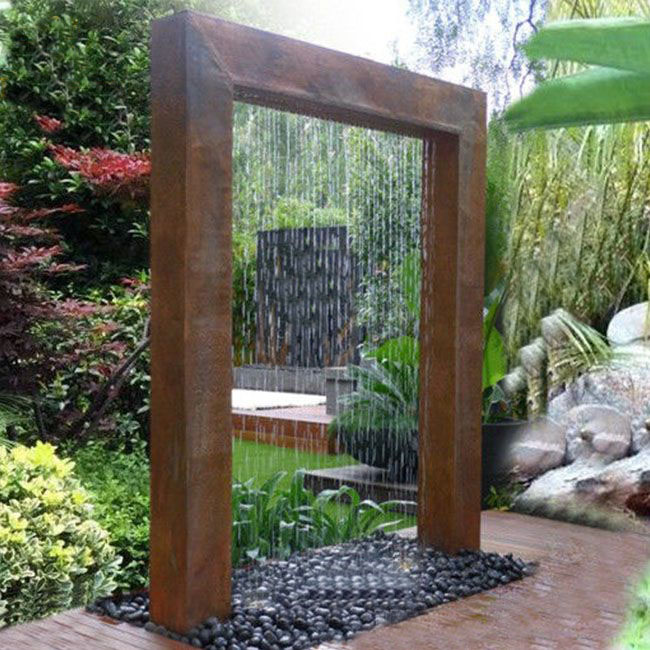1. Types of contaminants produced by screen printing
In screen printing operations, there are many types of contaminants produced. These environmental pollutants can be broadly divided into three categories: chemical, physical and biological. Among them, chemical pollutants and physical pollutants are the main pollutants. Chemical pollution is dominated by inorganic substances such as: mercury, chromium, lead, chlorides, etc. Organic substances include organic chlorine, phenols, etc. Physical pollutants mainly include noise, vibration, and heat sources. Due to the different forms of these pollutants, they can be divided into air pollutants, water pollutants and solid pollutants.
1 air pollutants. Including aerosols (smoke, dust, fog), harmful gases (sulfur oxides, hydrocarbons, carbon dioxide, hydrogen chloride, etc.).
2 water pollutants. Including inorganic suspended solids (slag, iron filings), toxic pollutants (chemical wastes such as mercury, lead, chromium, phenol, chlorine, etc.), acid-base pollutants (acids and alkalis), oils (oils, lipids, etc.). In addition, hot water, high-temperature exhaust gas and other heat sources also cause pollution to the water.
3 Solid contaminants. Solid contaminants include solid wastes such as paper, plastics, glass, metal, ceramics, sawdust and so on.
Noise and vibration are also sources of environmental pollution.
2. Formation of pollutants
Contamination in screen printing production is mainly caused by photosensitive materials, inks (solvents and pigments), and the like.
1) Contamination caused by screen-printing photosensitive materials. The dichromate type photosensitive material commonly used in plate making contains a large amount of hexavalent chromium ion Cr+6 in the waste liquid discharged during the plate making process. Cr+6 is toxic, and if the human body comes into contact with a solution containing Cr+6, it will produce dermatitis. And other diseases; the discharge of waste liquid will cause pollution to the environment. The use of non-toxic diazonium salts and diazo resin emulsions can cure chromium ion contamination.
2) Contaminants generated by solvents in screen printing inks. Certain solvents in screen printing inks, which volatilize or emit into the air, can pollute the environment and affect the growth of animals and plants. In particular, volatile inks are very serious for air pollution. In addition, some solvents and auxiliaries in the ink have a relatively low ignition point. When they accumulate in the air and reach a certain concentration, they can cause fire in the event of fire. This should cause the production unit to pay attention.
In order to reduce the environmental pollution caused by the solvent in the ink, some methods can be taken to solve it.
1 Some substrates (paper, cloth, etc.) can use water-based inks.
2 Install a ventilation device in the printing shop and remove the exhaust gas in time. Exhaust gas can be eliminated by the combustion method, and the exhaust gas can be purified by the water spray method at the discharge port.
3 Ink and flammable, volatile solvents, strengthen the use of management, pay attention to sealing.
3) Contaminants produced by pigments in screen printing inks. Some metal materials, such as copper and mercury, are commonly used in screen inks. Their ions or vapors can form contaminants. In addition, the basic dyes used for printing and dyeing are yellow and methyl violet are carcinogens. The use of ceramic containers, glass products, food packaging, and children's toys printed with toxic pigments will cause some harm to the human body.
The pigment waste solution can be treated by a purification treatment method. The use of some slightly toxic pigments must be strictly in accordance with the relevant national safety standards. Strengthen the use of management and reduce pollution.
3. Air pollutants and treatment methods
Air pollutants are substances that enter the atmosphere due to human activities or natural processes and are harmful to humans or the environment. Such as exhaust gas and dust. In screen printing, harmful volatile gases that can be generated and harmful dust that can enter the air include sulfuric acid, nitric acid, ammonia, carbon disulfide, formaldehyde, methanol, benzene, phenol, acetone, nitrobenzene, trichloroethylene, and chromic acid. Salt dust. If the operator inhales or comes into contact with these gases, it will cause many discomforts, such as respiratory infections, tears, dermatitis, numbness, etc. Severe persons will be infected with blood diseases and even cancer. Therefore, the exhaust gas of the screen printing workshop must be processed.
The purification technology of exhaust gas in screen printing mainly includes conversion and separation methods. The conversion method is to purify the pollutants in the exhaust gas through a chemical reaction. The separation method is to physically purify the exhaust gas.
Common exhaust gas purification methods are the following.
1 condensation method. The condensing method is usually suitable for the first-stage treatment of exhaust gas having a relatively high concentration. It can be used to suck back high concentrations of mercury, sulfur, phosphorus, etc. in the exhaust gas.
The condensation method utilizes the properties of the same substance having different saturated vapor pressures at different temperatures and different substances having different saturated vapor pressures at the same temperature. By cooling or pressurizing the mixed gas, some of the gas pollutants are condensed. Liquid or solid, so that the pollutants separated from the gas mixture for purification purposes.
2 absorption method. It is the most commonly used method to purify gaseous pollutants and is suitable for purifying organic vapors and sulfur dioxide and other chemical substances. Commonly used absorbents are water, acidic solutions, alkaline solutions and organic solvents. The basic principle of the absorption method is to use a liquid absorbent to treat the gas mixture and remove one or more of the components. This absorption method can also be divided into chemical absorption and physical absorption according to chemical reactions.
3 adsorption method. Adsorption is the use of porous solid material can adsorb pollutants, so that the pollutants in the exhaust gas adsorbed on the porous solid surface and separated from the gas to achieve the purpose of purifying the air. Adsorption is a common purification method in screen printing plants and is mainly used to purify low-contaminant pollutants in exhaust gas.
4. Water pollutants and treatment methods
The following methods are commonly used for the treatment of major water pollutants in screen printing operations.
(1) acid, alkali waste. Acid-alkali waste liquid is the main pollutant of screen printing and printing. The alkaline waste liquid discharged from the fabric printing and dyeing plant is more serious. The main components of alkaline waste liquid are caustic soda, sodium carbonate and amines. After the acidic waste liquid and alkaline waste liquid are discharged into public water sources, the pH of the water source will change. In addition, acid and alkali waste liquids have the effect of eliminating or inhibiting the growth of bacteria and microorganisms, thereby hindering the self-purification of water bodies and affecting the ecology. The international drinking water standards stipulate that the pH of the ecological water source should be between 7 and 8.5; the PH value of the culture water system should be between 6 and 9.2.
The main methods for the treatment of acidic wastewater include: acid-alkali wastewater mutual neutralization, acid addition neutralization, and flue gas neutralization.
(2) Mercury wastewater. Mercury wastewater is a pollutant emitted by plate-making plants and printing and dyeing plants. Mercury is classified into organic and inorganic mercury, which is more toxic than inorganic mercury. Mercury poisoning is harmful to the human body. Mercury concentrations can cause fish and other aquatic organisms to die when the concentration of mercury is 0.006-0.01 mg/l. When the mercury content is between 1 and 2 g, it can cause death. The common symptoms of mercury poisoning are fatigue, movement disorders, and mental confusion.
The method of treating organic mercury in waste water is to first oxidize the organic mercury in the waste liquid to inorganic mercury, and then perform the treatment.
Treatment methods for inorganic mercury in wastewater include activated carbon adsorption, chemical coagulation, sulfide precipitation, metal reduction, and ion exchange.
(3) Chromium ion (Cr+6) wastewater. In order to reduce the pollution caused by Cr+6, the following methods can be adopted.
1 Add reducing agent to the waste liquid containing Cr+6 to make Cr+6 become trivalent chromium hydroxide to reduce its toxicity.
2 The Cr+6 waste liquid is treated by precipitation method, and the waste liquid can also be treated by ion exchange method.
In short, environmental protection is an important part of printing management. In addition to actively handling pollutants, it should also actively adopt new processes and new technologies, replace old process materials with green environmental protection materials, and reduce pollution sources.
Water Feature does not disperse, section by section jumping, such a fountain is called weathering steel water curtain, water curtain is an interactive and entertainment strong water feature equipment, Garden Water Fall suitable for some commercial squares, large amusement parks and other places with more people flow, because weathering steel itself than all materials rust prevention, more suitable for indoor and outdoor use than other materials. The advantages of fresh and strange make it become a "sharp tool" to attract people. For other facilities, the Water Fountain has the advantages of installation, quick and convenient movement. In addition, the water curtain has a strong adaptability to the application site.The rusty surface of weathering steel can easily make people feel the vicissitudes of history, thus visualizing the concept of time, which cannot be captured. Therefore, it is natural to apply it to the creation of some commemorative gardens. Because this sense of vicissitusions can be naturally integrated into the surrounding gentle descent, rusted steel is often given the label of science and technology, artistic creativity and applied to some water curtains. Weathering steel for you to deduce the harmony of art and aesthetic, together feel the return to nature of the red rust art, unique processing technology, later can be free from maintenance. Weathering steel safety, environmental protection, beautiful and generous, very popular with designers.


Water Curtain,Rain Curtain,Water Curtain Wall,Pool Rain Curtain
Henan Jinbailai Industrial Co.,Ltd , https://www.gardensteelarts.com